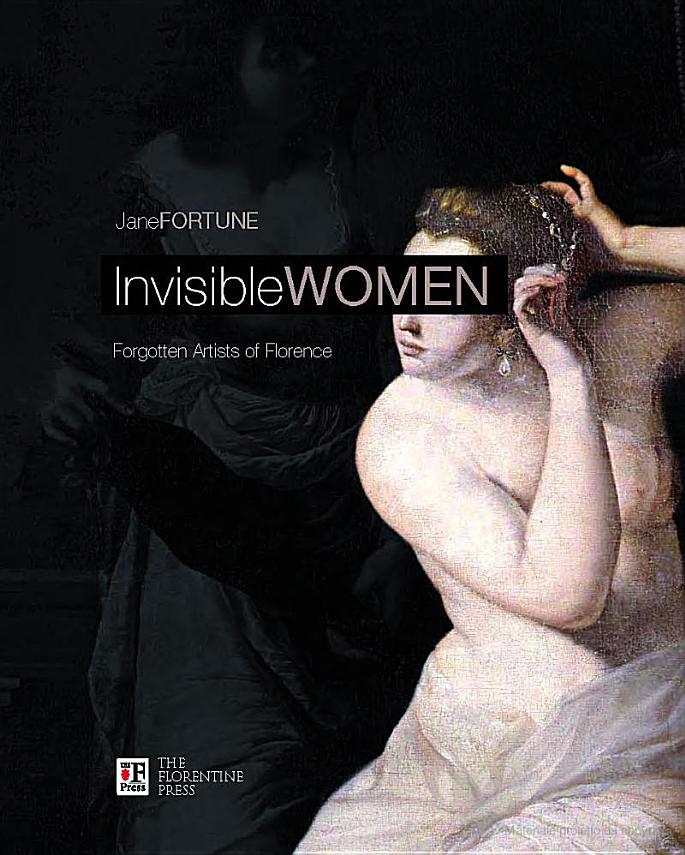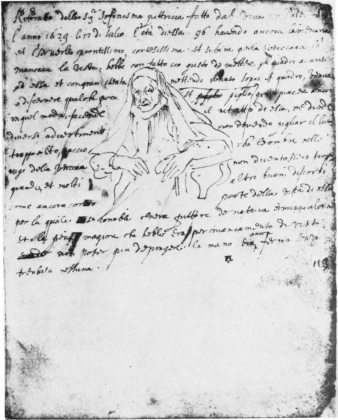Monday, February 27th, 2012
“Invisible Women: Forgotten Artists of Florence” by Jane Fortune
I recently have had the pleasure of reading Jane Fortune’s book, Invisible Women: Forgotten Artists of Florence. The next time I visit Florence, I want to take this book with me! Jane Fortune explores some of the lesser-known female artists, whose works are located in some of the great galleries and institutions (and their storage vaults, unfortunately) in Florence. In addition to discussing the lives of these artists, the book aims to introduce the reader to the restoration and rediscovery of unknown or famous works by women artists.
Invisible Women is divided into very short chapters that are dedicated to a particular artist, or a short theme (like the restoration for a work of art). However, even though the chapters are short, they provide a wealth of information about female artists who lived between the 15th and 20th centuries. I was continually surprised at learning new facts and information about these female artists, even though some have long been familiar to me. I also was pleased to see how the book included a range of artistic techniques and traditions, including those of Dutch and French artists.
To give somewhat of a sense of the book, I thought that I would write down some short facts that I learned while reading the book (loosely similar to how Fortune presents different artists in short chapters):
- Elisabeth Louise Vigée-Le Brun (self-portrait shown above) painted no less than 600 portraits (and her oeuvre is about 800 works). Her rise to become the court painter for France is very impressive, considering that Vigée-Le Brun was primarily self-taught by copying the masters (p. 73). It has been remarked that the woman depicted on the left side of Vigée-Le Brun self-portrait resembles Marie Antoinette, Vigée-Le Brun most famous subject.
- Angelica Kauffmann was conned into marrying a man who fraudulently posed as a count from Sweden. Given her friendship and connection with the painter Sir Joshua Reynolds, Kauffmann was able to avoid the social stigma of separation. Years later, after her charlatan-cum-husband passed away, was Kauffmann free to marry again. She married the Venetian painter Antonio Zucchi (p. 77).
- Maria Van Oosterwyck (shown above) weaseled out of a marriage proposal to fellow floral painter Wilhelm Van Aelst. Maria originally accepted the proposal with a few conditions. The marriage could take place after the following: 1) Van Aelst needed to work for one year, working 10 hours days at his studio and 2) Van Aelst could not display his affections for Maria at any time. At the end of the year, Maria “cunningly refused his proposal, showing him her ticks for the times he had failed to maintain his part of their pact” (p. 93).
- Near the end of her life, Sofonisba Anguissola was the tutor to the 24-year old Flemish painter, Anthony Van Dyck. Anguissola was losing her eyesight (possibly due to cataracts), but still continued to advise Van Dyck on his painting technique. Later, Van Dyck remarked “that he had learned more from a sightless old woman than from all the master painters in Italy” (p. 146).
- Artemisia Gentileschi didn’t learn to read or write until she was an adult (p. 157).
- Artemisia Gentileschi was commissioned to make a painting (one of the first in the cycle of 15) to commemorate the life of Michelangelo. The Allegory of the Inclination (c. 1615-1616) is part of the Casa Buonarroti collection.
I noticed that Jane Fortune focused her book on artists who made two-dimensional art (like paintings or pastels). This made me wonder about female sculptresses who worked in Italy (such as Properzia de’ Rossi) between the 16th and 20th centuries. Would there be enough information to write another book on sculptresses (whose works are in Florence or elsewhere in Italy)? Painting and drawing seem to have been a more popular and accessible activities for women during that time, but perhaps I only make that assumption because there isn’t much written information about sculptresses.
Anyhow, this book was very interesting and fun. The chapters are written in a warm, approachable tone which compliments the beautiful color reproductions. The book is written in both English and Italian, so it has appeal to a broader audience. The other great thing about this book is that is provides “The Women Artists’ Trail Map” at the end of the chapters, so that a visitor to Florence can easily locate paintings by female artists that are currently on public view. Isn’t that neat?
I would highly recommend this book to anyone who is interested in art or women artists. The proceeds from Invisible Women goes to support projects funded by the Advancing Women Artists Foundation and the Florence Committee of National Museum of Women in the Arts. What great causes!
Thank you to Linda Falcone and The Florentine Press for the review copy of this book.




Wonderful post M! This looks like a fascinating book on a topic that seems to be coming to finally getting more scholarly attention.
The self portrait images are lovely – in fact – I was just given a sneak preview of a wonderful presentation by a French production house that presents one of Vigee-Le Brun’s Marie Antoinette paintings – it should be available online at some stage and I will return and leave the link here for your readers.
The van Dyck/Anguissola anecdote is fabulous – I wonder it if it is based on documentation or is an apocryphal tale?
Kind Regards
H
Hi H! Thanks for your comment. It seems like this anecdote is more than apocryphal; we know about Van Dyck’s opinion of Anguissola from an original sketchbook by Van Dyck. I haven’t read an actual transcript of what is written in the sketch book (from what I can tell, it is currently in the British Museum collection). However, there is an 1915 article from the “Burlington Magazine” which discusses the sketch book contents. I imagine that Jane Fortune might have found her information about the Anguissola/Van Dyck relationship through this sketch book (or at least from a secondary source). This is what the Burlington Magazine says:
“Just 22 years ago there appeared for sale at Christie’s an original sketch-book by Van Dyck, in which the young Flemish painter set down records and memoranda of the Italian pictures which he admired on his first journey to the south. This sketch-book was passed into my possession, and it was ultimately restored to Chatsworth, whence it seems to have mysteriously disappeared a hundred years previously. Among the many personal records to be found in its pages none is more strangely touching than the account given by Van Dyck of his meeting with the aged Sofonisba Anguissola in Palermo. He also painted her portrait and made a rapid sketch of her in the note-book, accompanied by the details of the old lady’s life and other particulars. She was then, he says, 96 years old and quite blind, and as he is careful to record the actual date of the visit, viz., the 12th of July 1624, it follows that she was born in 1528.” (Herbert Cook, “More Portraits by Sofonisba Anguissola,” in Burlington Magazine 26, no. 144 (1915): 228.
I included an image of the sketchbook in this post, for readers who might find it of interest. Along these lines, there is painting attributed to Van Dyck, “Portrait of an Old Woman,” which may be a depiction of Anguissola too. Oliver Millar discusses this portrait in an article, “Notes on Three Portraits by Van Dyck” in Burlington Magazine 111, no. 796, 1969: 414-418.
All this being said, there Van Dyck might have written about Anguissola somewhere other than this sketch book, too. If I find more information, I will post it here.
Hi Monica, thanks for another great review. I particularly like how you drew out fun facts from the book – you noticed things I didn’t.
Just a reminder to readers that the book can be purchased here: http://www.theflorentinepress.com/invisible-women-fortune-2/
Alexandra